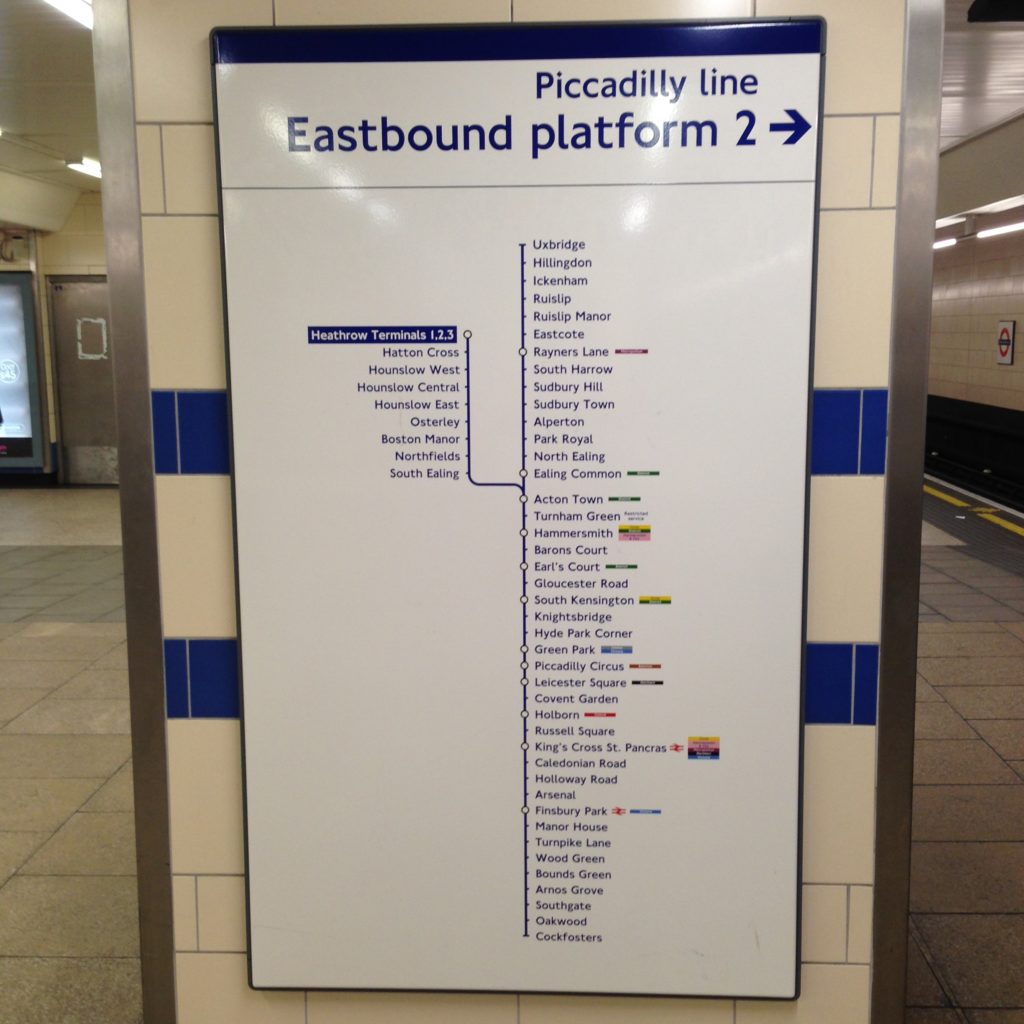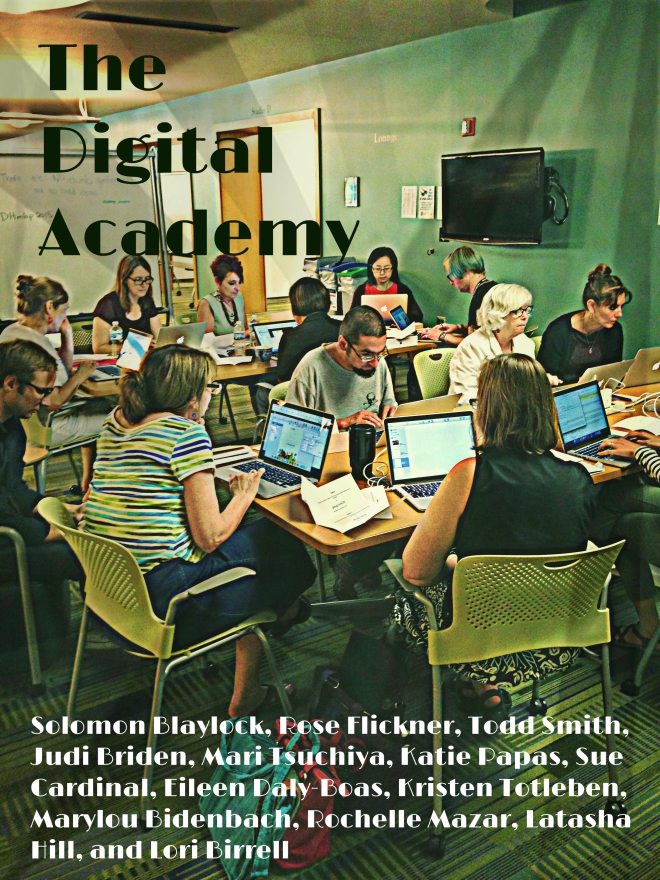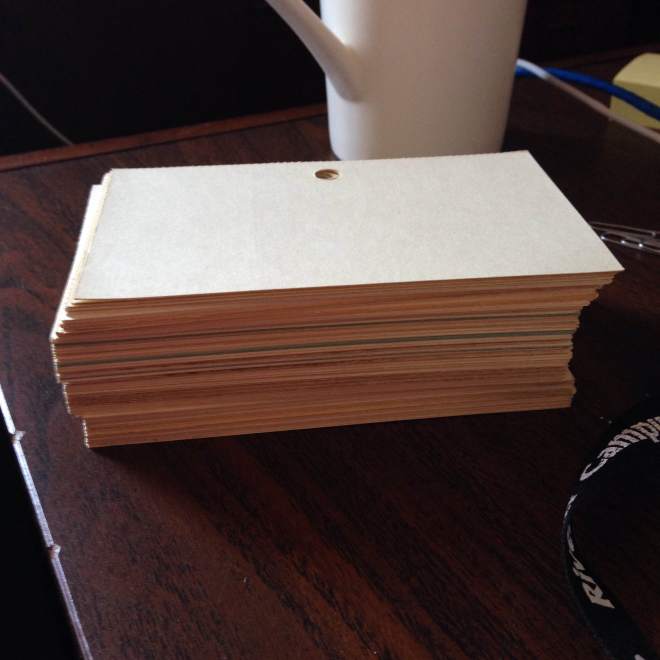Being the odd sort of academic librarian that I am, with no real connection to books, I end up spending perhaps more time than most thinking about what academic librarianship is at its core. I don’t have a lot to take for granted as markers of my librarianship (reference, collection development, instruction, for instance, none of those), but you can find the roots of the profession in what I’m doing nonetheless…as long as you’re prepared to let go of the obvious, and consider what the obvious actually means.
Early on I learned that academic librarians are, more often than not, the layer between the patron and the complicated, ever-changing tools and resources they have to wrestle with in order to get their work done. We stood as the interface for scholarship for a long time, the door through which any academic or student would need to pass through in order to find and use scholarly literature. We made it easier to sift though. We gave advice about sources and materials. We connected patrons with a need with the resource that would fill (or overflow!) it. When computing arrived on the scene, we were often the layer between the patron and the technology, too. Libraries (academic and public) have long been a sure place where patrons can get access to new technologies and get help using it.
I think that’s a really powerful way to view librarianship, and one that I find personally very inspiring. Librarianship if often the liquid that fills up the spaces between two things that need to fit together but often don’t quite do so as intended.
As a librarian who works exclusively with online tools as opposed to publishers or physical media, I’ve taken that idea to heart. Not only do I see myself as a kind of gateway between the wild world of collaborative and communication technologies and the faculty who need them, but I also see it as my role to give patrons the tools they need to approach that world and put its innovations to good use in their teaching and their research.
The natural answer to this problem is to provide training, but that’s not where I think this work starts. Jumping to training and writing instructions is skipping two fundamental steps along the way. If it’s my job to be the layer between online technologies and patrons who need them, to communicate between one and the other in the languages they both understand, I need to prepare both sides for each other, and I need to invent a language to help them understand each other. I need to create the circumstances that will foster effective innovation and meaningful change.
Is that training? Knowledge? To some degree, sure. But as I say, I think we’re making too many assumptions when we jump straight to training and skill-building, as if that’s the gap to fill.
The first real hurdle to overcome isn’t a lack of knowledge. It’s fear.
Tools designed to be used by the general population are, in general, not all that complicated. Anything can be difficult before you understand how it works, but none of it is really that hard, and i think everyone knows that. The difficulty of using tools isn’t the thing that prevents innovation and change. Fear is.
Fear of what? Of getting it wrong; of looking stupid; of making a mistake that breaks everything; of not knowing all the answers; of being embarrassed in front of colleagues, TAs, students; of not know how to help students use the tool you’ve asked them to use; of creating too much work for yourself; of failing to think through all the consequences of using a tool, and having to scrap months and months or work because you dug yourself into an impossible hole; of having to do it all over again; or it vanishing, crashing, falling off a table and bursting into flames. All kinds of things. This is low-level fear, a niggling kind of fear that, if spoken aloud, is often easily dismissed. But it doesn’t get spoken aloud, and instead it festers and prevents patrons from taking risks. We don’t talk about fear in the context of library services, and we don’t tend to think of ourselves as alleviating fear. Sometimes we do the work of fear reduction quite by accident, without realizing that that was the great value we offered. But other times we don’t address the fear at all, and often we make that fear worse.
There are any number of ways to reduce fear. What I’ve found in my own work is that if I demonstrate my competence with the tools in question (often just by seeming knowledgeable, or passing on information, or being helpful), by showing interest in and respect for their skills and knowledge, by not being judgmental, and then make sure patrons know that I am here to help them no matter what, that’s a good start. I tell them what they need to know when they need to know it instead of waiting for them to hit a bump in the road. I put up the signposts and draw them maps so they always feel sure when they put their feet down on the ground. And should the worst happen in spite of all our best efforts, I will personally dig them out of whatever kind of hole they manage to fall into. Knowing all this, and seeing that it’s all true,patrons will take risks. They will innovate, they will experiment. If they know the ground beneath their feet is solid, they will start to run.
I didn’t know I was in the fear reduction business until I started to really look hard at what was happening in my daily work. Where innovation is occurring on my watch, it isn’t always because the instructor now has better tech skills or more technical knowledge. But they certainly have more confidence in using the tools available. They are more willing stretch.
Reducing fear is critical; but the other piece of being the layer between the patron and the big complicated thing (whatever it is) is coming up with a language so that the patron can make sense of it. It’s a matter of making the affordances of a system or tool or technology plain. Again, the standard answer to this is often training and skill-building, but I’d hesitate. You can’t jump right to training, that’s not enough. I think the answer starts in metaphor.
If you don’t know what a tool thinks it is, you won’t know how to use it. Email is as successful as it is, I would argue, in large part because of it’s watertight metaphor. It’s just system messages sent to a particular registered user, but once you call it mail, everyone who’s ever seen a mailbox full of letters and newspapers knows what it does. You send it and receive it; you open it, you read it, you store it or throw it out. You can get packages that contain things. Your mailbox is only so big and can only fit so much stuff in it. Calling it mail provides an insight into the affordances of email, and helps everyone understand what it is and use it. I think this is why many people who are afraid of online technologies usually have no fear of their email. They tend to use their email for everything. You’ve met those folks who send themselves email as a kind of task list, right? They “read” each message when the task done. The people I know who do this don’t tend to be hugely tech savvy, but they understand how this one tool works, they get its metaphor, and they’re ready to twist it into any shape to suit their needs. That’s good innovation! But it only happens if the metaphor is solid.
Many of the tools and systems our patrons need to use don’t come along with such helpful metaphors. So part of the work of being the layer between them is to come up with the language for them so that patrons understand them and innovate their practice using them.
It’s like a giant whiteboard. It’s like a file folder. It’s like a rolodex. It’s a blank piece of paper you can pass around the room. What’s going to make sense to these people, in this place, with the backgrounds that they have? Librarianship has the capacity to be an incredibly creative profession if you take it as read that metaphor construction is a key part of the job. Our role is to help our patrons see the affordances of new tools, to help them find a way to be creative using them, and very often that requires a good, solid, relatable metaphor. If you know that a wiki is a blank note book anyone can write in, it’s much easier to imagine what you might use it for.
We used to be the layer that connected patrons with resources that would be impossible for them to find otherwise. Now we can be the layer that provides the metaphorical scaffolding that unlocks functionality for our patrons and allows them to be creative. While we used to hold the literal keys to resources, we can now unlock resources that are already available by housing them in a metaphorical framework that will make sense to our community. And by reassuring them that we’ve got their back.









